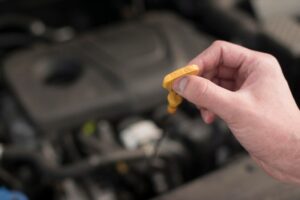Are you frustrated with stubborn screws that just won’t budge? Do you find yourself reaching for the wrong screwdriver time and time again? Understanding the different types of screwdriver heads is crucial for anyone who tackles DIY projects or repairs.
With 14 types to choose from, each designed for specific screws, having the right tool can make all the difference.
In this guide, we’ll dive into the essential screwdriver heads you need to know, ensuring you have the knowledge to select the perfect tool for every job. Say goodbye to stripped screws and hello to smooth, efficient projects!
Understanding the Basics of a Screwdriver
A screwdriver is a tool designed for turning screws. It consists of three main parts: the handle, shaft, and tip. The handle provides a comfortable grip, allowing you to apply the necessary force. The shaft connects the handle to the tip, which fits into the screw head.
Screwdrivers come in various sizes and types, each tailored to specific screws. Understanding these basics is essential for any DIY project. The right screwdriver ensures efficient work and prevents damage to both the screw and the tool.
Choosing the appropriate screwdriver is vital. Using the correct tip matches the screw head, minimizing the risk of slippage or stripping. This knowledge makes your tasks smoother and enhances your confidence in tackling repairs or projects.
Components of a Screwdriver
A screwdriver is made up of three essential components: the handle, shaft, and tip.
The handle is designed for a secure and comfortable grip. It often features a non-slip surface to help maintain control during use. A good handle reduces hand fatigue, making it easier to work for extended periods.
The shaft is a long, cylindrical part that connects the handle to the tip. Its length and thickness can vary depending on the type of screwdriver and its intended use. A sturdy shaft provides stability and strength when applying torque.
The tip is the part of the screwdriver that fits into the screw head. Different shapes and sizes of tips are available, including flathead, Phillips, and others. It’s crucial that the tip matches the screw type to prevent damage and ensure efficient operation.
Each component plays a vital role in the overall functionality of the screwdriver, making it an indispensable tool in any toolbox.
Importance of Different Screwdriver Heads
Different screwdriver heads are crucial for proper fastening and efficient work. Each type of screwdriver head is designed to match specific screw shapes.
Using the wrong screwdriver can damage the screw, making it difficult to tighten or remove. This can lead to frustration and wasted time on your project.
Having a variety of screwdriver heads enhances your toolbox’s versatility. It allows you to tackle various tasks with ease, whether in DIY projects or professional settings. The right screwdriver head improves efficiency and reduces the risk of slippage, ensuring better control during use.
Understanding the importance of different screwdriver heads helps ensure precision in your work. It allows for successful outcomes in repairs and installations, making the right choice essential for any project.
With the appropriate tools, you can achieve better results and complete tasks more effectively.
Comprehensive Guide to 14 Types of Screwdriver Heads
Choosing the right screwdriver head is essential for any project. With various types available, understanding these options can significantly improve your efficiency. Each screwdriver head is designed to fit specific screw types, ensuring optimal performance and preventing damage.
This comprehensive guide covers 14 types of screwdriver heads you need to know. Each type has unique characteristics that make it suitable for different applications.
From the commonly used flathead and Phillips screwdrivers to specialized options like Torx and Robertson, knowing their functions will help you select the best tool for your tasks.
Selecting the correct screwdriver head not only streamlines your work but also enhances your overall project results. Whether you’re a DIY enthusiast or a professional, having the right screwdriver head at your disposal is vital.
Stay tuned as we explore each type in detail, offering tips on their usage and advantages.
Flathead or Slotted Head Screwdriver
The flathead or slotted head screwdriver is one of the most fundamental tools in any toolkit. Its design features a single flat blade that fits into the straight slot on the screw head. This simplicity allows for versatility in many applications, making it a go-to choice for various projects.
Flathead screwdrivers come in different sizes, enabling users to select the appropriate one for the screw they are working with. To use a flathead screwdriver effectively, begin by choosing the right size.
Insert the blade into the slot of the screw and apply downward pressure while turning. Keeping the screwdriver blade straight and centered in the slot is crucial. This prevents slipping and reduces the risk of damaging the screw or the tool itself.
Flathead screwdrivers are particularly useful in tasks such as assembling furniture, adjusting hinges, and performing minor electrical repairs. They are ideal for straightforward fastening tasks where precision is essential. However, users should exercise caution, as excessive force can strip the screw head.
The versatility of flathead screwdrivers extends beyond just their design. They can be used in tight spaces where other types of screwdrivers may not fit, making them invaluable for various jobs. Many users also appreciate that flathead screwdrivers are often less expensive than their specialized counterparts.
In summary, a flathead or slotted head screwdriver is a must-have tool for anyone involved in DIY projects or repairs. Its simple design, ease of use, and versatility make it an essential item in every toolbox.
By using the right size and technique, users can ensure efficient and effective fastening for a wide range of applications.
Phillips Screwdriver
The Phillips screwdriver is a widely used tool known for its cross-shaped tip. This design allows for a better fit into the recess of Phillips screws, which have a matching cross shape.
Phillips screwdrivers come in various sizes, making them suitable for a range of applications, from light household tasks to heavier industrial projects.
Using a Phillips screwdriver correctly is essential for efficient and accurate work. To start, insert the screwdriver tip into the screw head and ensure it is positioned perpendicularly.
This alignment minimizes the risk of slipping and potential damage to both the screw and the tool. Unlike flathead screws, Phillips screws are designed to allow the screwdriver to grip better, making it easier to apply torque.
Phillips screwdrivers are particularly popular in electronics, automotive, and construction fields. They are often found in furniture assembly and appliance repair, where secure fastening is critical.
Their cross-shaped design helps prevent cam-out, a common problem where the screwdriver slips out of the screw head, leading to stripped screws.
One advantage of Phillips screwdrivers is their ability to provide more torque than flathead screwdrivers. This is especially useful when working with stubborn screws that require extra force to tighten or loosen.
It’s important to apply steady pressure while turning the screwdriver, as excessive force can damage the screw head.
In summary, a Phillips screwdriver is an essential tool for anyone engaged in DIY projects or repairs. Its unique design offers improved grip and torque, making it a reliable choice for a variety of tasks.
By using the right size and technique, users can ensure effective fastening and maintain the integrity of screws throughout their projects.
Pozidriv Screwdriver
The Pozidriv screwdriver is an advanced variant of the Phillips screwdriver. Its design features additional slots on the tip, which provide enhanced grip and reduce the chances of cam-out. This makes Pozidriv screwdrivers particularly useful in applications where a secure fit and high torque are required.
Pozidriv screws are characterized by their cross-shaped recess, similar to Phillips screws, but with extra lines radiating from the center.
These additional contact points help the screwdriver engage more effectively, allowing for better torque transfer and less slippage. This feature is particularly beneficial in construction and woodworking, where sturdy fastening is crucial.
Using a Pozidriv screwdriver requires careful alignment of the tool with the screw head. It is essential to ensure that the screwdriver tip fits snugly into the recess to maximize grip and prevent damage. Like with Phillips screwdrivers, users should apply steady pressure while turning to avoid stripping the screw.
Pozidriv screwdrivers are available in various sizes, making them versatile for different projects. They are often favored in applications like furniture assembly and general repairs, where reliability and ease of use are paramount.
Many manufacturers prefer Pozidriv screws because of their enhanced performance compared to standard Phillips screws.
In summary, the Pozidriv screwdriver is a valuable addition to any toolkit. Its improved design offers greater torque and less slippage, making it ideal for heavy-duty applications.
By selecting the appropriate size and using it correctly, users can achieve more efficient results in their projects, ensuring that screws are securely fastened without risk of damage.
Robertson (Square) Screwdriver
The Robertson screwdriver, also known as a square screwdriver, features a unique square-shaped tip designed to fit square recesses in Robertson screws.
This type of screwdriver was invented by Peter Lymburner Robertson in Canada and is widely used in woodworking and construction projects due to its excellent torque transfer and reduced cam-out.
Robertson screws have a distinctive square socket that allows the screwdriver to engage securely, preventing slippage during use. This design enhances grip, making it easier to apply force without damaging the screw or the tool.
The Robertson screwdriver is particularly popular among Canadian DIYers and professionals, as it offers reliable performance in various applications.
To use a Robertson screwdriver effectively, select the correct size that matches the screw’s square recess. Insert the tip into the screw head and turn it clockwise to tighten or counterclockwise to loosen.
It’s important to maintain steady pressure while turning to ensure proper engagement and prevent any damage.
Robertson screwdrivers come in multiple sizes, allowing users to tackle different projects with ease. Their design minimizes the risk of cam-out, making them a preferred choice for tasks requiring precision. This feature is especially beneficial in tight spaces or when working overhead, where a secure fit is crucial.
The Robertson (square) screwdriver is an essential tool for anyone involved in woodworking or construction. Its design offers superior grip and torque transfer, making it ideal for various projects.
By using the right size and employing proper technique, users can achieve excellent results, ensuring that screws are securely fastened without the risk of damage.
Torx (Star) Screwdriver
The Torx screwdriver is distinguished by its unique star-shaped tip, which typically has six points. This design provides exceptional torque transfer and minimizes the risk of slippage, making it a favored choice in various industries, including automotive, electronics, and appliance manufacturing.
One of the key advantages of Torx screws is their resistance to cam-out. The star shape allows for a deeper engagement with the screw, which reduces the chances of the screwdriver slipping out while turning. This feature is especially important in high-torque applications where precision and control are critical.
To use a Torx screwdriver effectively, it’s essential to select the correct size that matches the screw head. Insert the tip into the star-shaped recess of the screw and turn it in the appropriate direction—clockwise to tighten and counterclockwise to loosen.
Applying steady pressure while turning will ensure proper engagement and prevent any potential damage to the screw or the tool.
Torx screwdrivers are available in various sizes, making them suitable for a wide range of tasks. Their design is particularly useful for working with delicate electronic devices, where precision is paramount.
When selecting a Torx screwdriver, it’s beneficial to choose high-quality tools from reputable manufacturers to ensure durability and effectiveness.
In summary, the Torx (star) screwdriver is an invaluable tool for anyone working with screws in diverse applications. Its unique design enhances torque transfer and reduces slippage, making it ideal for tasks that require precision and reliability.
By using the right size and technique, users can achieve efficient results and ensure the secure fastening of screws in their projects.
Hexagon (Hex) Screwdriver
The hexagon, or hex, screwdriver features a hexagonal-shaped tip that fits into screws with corresponding hexagonal recesses. This design is commonly used in furniture assembly, automotive work, and various DIY projects.
Hex screwdrivers provide a secure grip, which enhances torque transfer, making them ideal for tasks that require significant force.
Hex screws are popular because they resist stripping better than other screw types. This resistance is partly due to the larger surface area that the hex driver engages with the screw. Users can apply more torque without damaging the screw head, ensuring that fastenings are secure.
To use a hex screwdriver effectively, select the appropriate size to match the screw. Insert the hex tip into the screw head and turn clockwise to tighten or counterclockwise to loosen. It’s crucial to keep the screwdriver straight to avoid slipping and damaging both the screw and the tool.
Hex screwdrivers are available in both manual and powered versions, with many sets offering interchangeable heads for versatility. This adaptability is beneficial for tackling various projects that involve different sizes of hex screws.
In summary, the hexagon (hex) screwdriver is a must-have tool for anyone engaged in home improvement or assembly projects. Its design allows for efficient torque transfer and reduced risk of stripping screws.
By using the correct size and technique, users can achieve effective results, making this tool a valuable addition to any toolkit.
Spanner Driver
A spanner driver, often referred to as a nut driver, is a specialized tool designed for tightening and loosening hexagonal nuts and bolts. It features a hollow shaft that fits securely over the nut or bolt head, providing excellent grip and torque.
Spanner drivers come in various sizes to accommodate different nut dimensions, making them versatile for various applications, particularly in automotive, plumbing, and machinery work.
Using a spanner driver is straightforward. Begin by selecting the correct size for the nut or bolt. Insert the driver over the fastener and turn it clockwise to tighten or counterclockwise to loosen.
The design of the spanner driver allows users to apply significant force without slipping, which is crucial for securely fastening nuts and bolts.
One advantage of using a spanner driver is its ability to reach nuts and bolts in tight or awkward spaces. This is particularly useful in machinery and automotive repairs where conventional wrenches may not fit.
Additionally, some spanner drivers are compatible with power tools, allowing for quicker and more efficient fastening.
When choosing a spanner driver, consider factors like material durability and grip comfort. High-quality materials ensure longevity, while an ergonomic design reduces strain during prolonged use.
In summary, a spanner driver is an essential tool for anyone working with nuts and bolts. Its design provides a secure fit, allowing for efficient fastening and loosening. With the right size and quality, a spanner driver can significantly enhance productivity in various repair and assembly tasks.
Frearson Driver
The Frearson driver, also known as a Recessed Screwdriver, is a specialized tool designed for fastening screws with a unique cross-shaped recess. This type of driver is similar to the Phillips screwdriver but has a more pointed tip that allows for better engagement with the screw head.
The Frearson design offers a deeper fit, which enhances torque transfer and minimizes the risk of cam-out, where the driver slips out of the screw head during use.
Frearson screws are commonly found in marine applications, machinery, and high-torque scenarios where a secure connection is critical. The versatility of the Frearson driver makes it suitable for various projects, including woodworking and metalworking, where durability and reliability are paramount.
Using a Frearson driver is straightforward. First, select the appropriate size to match the screw head. Insert the driver into the screw and apply downward pressure while turning it clockwise to tighten or counterclockwise to loosen. The pointed tip helps keep the driver securely engaged, providing more control during operation.
One of the significant advantages of the Frearson driver is its ability to provide better grip and torque compared to standard Phillips drivers.
This feature makes it especially useful in applications requiring high levels of precision and strength. Additionally, Frearson screws can often be driven with both Frearson and Phillips drivers, offering flexibility in tool selection.
Japanese Industrial Standard (JIS) Screwdriver
The Japanese Industrial Standard (JIS) screwdriver is specially designed to fit JIS screws, which are prevalent in Japanese electronics and machinery. These screwdrivers are known for their precise fit, making them essential for tasks requiring careful handling and assembly.
Unlike traditional Phillips screwdrivers, JIS screwdrivers have a flatter tip and different dimensions that help prevent stripping and damage to screws.
JIS screws are commonly found in various devices, including cameras, laptops, and other electronic equipment. The JIS design enhances the connection between the screwdriver and the screw head, minimizing the risk of slippage during use. This feature is crucial in electronics, where damage can easily occur if screws are mishandled.
To use a JIS screwdriver effectively, first identify the screw size and type. Insert the screwdriver tip directly into the screw head and ensure a secure fit. It’s important to apply steady pressure while turning the screwdriver to avoid slipping.
The correct angle and depth of insertion are critical for preventing damage and achieving optimal torque.
Investing in a set of JIS screwdrivers can greatly enhance your toolkit, especially if you frequently work with Japanese-made electronics. Using the right tool ensures better performance and reduces the likelihood of damaging delicate components.
The precision and reliability of JIS screwdrivers make them a valuable addition for DIY enthusiasts and professionals alike.
Clutch Head (Bow Tie) Screwdriver
The clutch head screwdriver, often referred to as a bow tie screwdriver, features a distinctive design with two opposing slots that resemble a bow tie.
This specialized tool is primarily used for specific screws found in automotive and appliance repairs. The unique design of the clutch head screw helps prevent tampering, making it particularly useful in machinery where unauthorized access is a concern.
Clutch head screws are designed to be secure, which is why the corresponding screwdriver is crucial for proper use. The design allows for better torque transfer while reducing the risk of stripping the screw head.
When using a clutch head screwdriver, it is essential to select the correct size to fit the screw properly. An ill-fitting screwdriver can damage the screw or the tool itself.
To use a clutch head screwdriver effectively, insert the tip into the clutch head screw and ensure it is fully seated. Apply steady pressure while turning the screwdriver to either tighten or loosen the screw. It’s important to maintain a straight alignment to avoid slipping and potential damage.
Having a clutch head screwdriver in your toolbox can be a valuable asset, especially if you work with older appliances or vehicles. These screws are less common today, but they remain essential in specific applications. A well-maintained clutch head screwdriver can make your repairs easier and more efficient.
In summary, the clutch head screwdriver is a specialized tool designed for specific applications. Its unique design provides precision and security when working with clutch head screws. By using the correct size and applying steady pressure, you can ensure effective fastening and repair.
Hex Socket Screwdriver
A hex socket screwdriver is designed for hexagonal screws or bolts. It’s common in automotive and machinery tasks. The hollow tip fits securely over the hex head, allowing for strong torque transfer.
These screwdrivers come in different sizes. Using the right size is important to avoid damaging screws or the tool. To use it, insert the tip over the screw head and turn the handle to tighten or loosen.
Hex socket screwdrivers can be manual or electric. Electric models often have adjustable torque settings to prevent over-tightening. This is useful for precision work.
Having a hex socket screwdriver is essential for various projects. It helps you work effectively with hex screws in different applications. Overall, it’s a valuable tool for anyone who works with machinery or furniture.
Battery-Operated Screwdriver
A battery-operated screwdriver is a portable tool ideal for quick projects and repairs. It eliminates the need for manual effort, making tasks easier and faster. These screwdrivers are powered by rechargeable batteries, providing convenience on the go.
When choosing a battery-operated screwdriver, look for adjustable torque settings. This feature helps prevent over-tightening and stripping screws. Battery life and charging time are also important to ensure the tool is always ready for use.
Many models come with added features like LED lights and magnetic tips. LED lights illuminate dark areas, while magnetic tips hold screws securely in place. This makes working in tight or awkward spaces much simpler.
Overall, a battery-operated screwdriver is versatile and user-friendly. It’s a valuable addition to any toolbox, especially for DIY enthusiasts and professionals. This tool enhances efficiency and convenience for various tasks.
Magnetic Screwdriver
A magnetic screwdriver is a handy tool that features a magnetic tip. This tip securely holds screws in place, preventing them from falling off during installation. It’s especially useful for working in tight spaces or overhead, where dropping screws can be a hassle.
These screwdrivers come in various types, including Phillips, flathead, Torx, and hex. This variety allows them to accommodate different screw types for diverse projects. Many magnetic screwdrivers also offer replaceable tips, adding to their versatility.
Using a magnetic screwdriver simplifies tasks by keeping screws accessible. However, caution is advised when using them around electronic components, as magnetism can cause damage.
Overall, a magnetic screwdriver is an essential tool that enhances efficiency and makes work easier for DIYers and professionals alike.
Ratcheting Screwdriver
A ratcheting screwdriver is a versatile tool designed for quick and efficient screw tightening or loosening. It features a mechanism that allows you to turn the screwdriver in one direction while the head rotates in both directions. This function speeds up repetitive tasks, making it ideal for projects requiring multiple turns.
Ratcheting screwdrivers come in both manual and electric versions, offering flexibility based on your needs. They often include interchangeable bits, allowing you to tackle various screw types with ease.
When using a ratcheting screwdriver, ensure the ratchet mechanism is set correctly for the task at hand. Proper alignment helps avoid damage to the screw or tool. Overall, this screwdriver is a valuable addition to any toolbox, enhancing productivity and making screw-related tasks simpler and faster.
How to Choose the Right Type of Screwdriver Head?
Choosing the right screwdriver head is essential for effective fastening. Start by identifying the type and size of the screw you need to work with. The shape of the screw head should match the screwdriver head.
Consider the material of the screwdriver head as well. A durable material will last longer and resist wear. A comfortable grip is also important, especially for extended use, as it reduces hand fatigue.
Additionally, investing in a set of interchangeable screwdriver heads can enhance your toolkit’s versatility. This way, you’ll be prepared for various projects with different screw types and sizes. Taking these factors into account ensures you select the right screwdriver for your needs.
Factors to Consider
When selecting a screwdriver head, several factors come into play. First, ensure the size of the screwdriver head matches the screw size. An improper fit can damage the screw or the tool.
Next, consider the shape of the screwdriver head. Different shapes are designed for specific screw types, such as Phillips or flathead. Choosing the right shape prevents slippage and increases efficiency.
The material of the screwdriver head is also crucial. Look for durable materials that can withstand regular use. This ensures longevity and reduces the likelihood of tool failure.
Check the compatibility of the screwdriver head with your handle. This is vital for ease of use. Lastly, balance quality and cost when making a purchase to ensure you get good value without compromising on performance.
What Does Each Type of Screwdriver Head Offer?
Each type of screwdriver head serves a specific purpose, enhancing efficiency and effectiveness in various tasks.
Flathead screwdrivers are ideal for basic screws with a straight slot. They provide straightforward engagement and are commonly found in household projects.
Phillips screwdrivers, with their cross-shaped heads, are widely used in electronics and general applications. They offer a better grip than flatheads, reducing the chance of slipping.
Pozidriv screwdrivers are designed for more torque and less cam-out than Phillips. They are excellent for construction and woodworking, providing a secure fit.
Robertson (square) screwdrivers have a square tip that fits snugly into the screw head. They are popular in woodworking due to their superior torque transfer and reduced cam-out.
Torx screwdrivers feature a star-shaped design, offering excellent grip and torque. They are common in automotive and electronics, making them essential for precise assembly.
Hex (Allen) screwdrivers are used for hexagonal screws, commonly found in furniture assembly and machinery. They allow for high torque and secure fastening.
Frearson drivers resemble Phillips screwdrivers but have deeper grooves. They reduce cam-out, making them suitable for marine and woodworking applications.
Japanese Industrial Standard (JIS) screwdrivers fit specific JIS screws, which are common in Japanese electronics. They minimize stripping and damage, ensuring a secure fit.
Clutch head screwdrivers are used for specialized screws in automotive applications. Their unique design prevents tampering and allows for precise control.
Hex socket screwdrivers are hollow tools designed for hexagonal bolts, ideal for automotive tasks. They provide a secure fit and allow for easier turning.
Battery-operated screwdrivers offer convenience for quick projects. They are portable and often come with adjustable torque settings, making them versatile for various tasks.
Magnetic screwdrivers hold screws in place, preventing them from falling during installation. They are helpful in tight spaces and can come with replaceable tips for versatility.
Ratcheting screwdrivers allow for quick tightening and loosening. Their mechanism enables continuous rotation in one direction, speeding up work on multiple screws.
Understanding what each screwdriver head offers helps in selecting the right tool for any project, ensuring efficiency and effectiveness.
How Can the Right Screwdriver Head Make a Difference?
Choosing the right screwdriver head significantly impacts the ease and success of any project.
The correct head ensures a perfect fit with the screw, reducing the risk of stripping. Stripped screws can cause frustration and delays, making it harder to complete tasks.
Using the right screwdriver also enhances torque application. This means you can apply the necessary force without slipping, leading to more secure fastening.
In specialized tasks, such as electronics or automotive work, the right screwdriver head is crucial. It ensures compatibility with specific screws, preventing damage and improving efficiency.
Additionally, the right screwdriver can save time. When you use the appropriate tool, you minimize the need for adjustments and reduce the effort required to complete the job.
Selecting the right screwdriver head leads to better results, increased safety, and a more enjoyable working experience. It can make all the difference in achieving professional-quality work at home or in a workshop.
FAQ’s
What are three types of drivers for screws?
The three types of drivers for screws are:
- Phillips: Cross-shaped for better grip and torque.
- Flathead (Slotted): Single slot for simple, straightforward use.
- Torx: Star-shaped for high torque and less stripping.
Which are the most common screwdrivers?
The most common screwdrivers are:
- Phillips screwdriver: For Phillips screws.
- Flathead screwdriver: For slotted screws.
- Torx screwdriver: For Torx screws.
- Hex screwdriver: For hexagonal screws.
Conclusion
Understanding the different types of screwdriver heads is essential for anyone involved in DIY projects or professional work. Each type of screwdriver offers unique features that cater to specific screw designs and applications.
From the basic flathead and Phillips screwdrivers to specialized options like Torx and Pozidriv, having the right tools at your disposal ensures efficiency and precision. Knowing how to choose the appropriate screwdriver head can prevent damage to screws and tools, making tasks smoother and more effective.
Moreover, investing in high-quality screwdrivers enhances durability and performance. Proper usage not only improves your results but also contributes to a safer working environment.
A well-rounded toolkit with a variety of screwdriver heads empowers you to tackle any project confidently. By selecting the right screwdriver, you’ll achieve better outcomes and enjoy the process of completing tasks around your home or workplace.











